Benzyl 4-bromo-1-piperidinecarboxylate
Modify Date: 2025-08-25 16:35:42
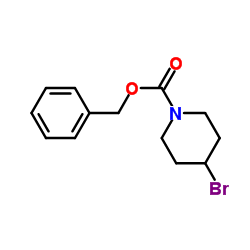
Benzyl 4-bromo-1-piperidinecarboxylate structure
|
Common Name | Benzyl 4-bromo-1-piperidinecarboxylate | ||
|---|---|---|---|---|
| CAS Number | 166953-64-6 | Molecular Weight | 298.176 | |
| Density | 1.4±0.1 g/cm3 | Boiling Point | 385.1±42.0 °C at 760 mmHg | |
| Molecular Formula | C13H16BrNO2 | Melting Point | N/A | |
| MSDS | USA | Flash Point | 186.7±27.9 °C | |
| Name | Benzyl 4-bromopiperidine-1-carboxylate |
|---|---|
| Synonym | More Synonyms |
| Density | 1.4±0.1 g/cm3 |
|---|---|
| Boiling Point | 385.1±42.0 °C at 760 mmHg |
| Molecular Formula | C13H16BrNO2 |
| Molecular Weight | 298.176 |
| Flash Point | 186.7±27.9 °C |
| Exact Mass | 297.036438 |
| PSA | 29.54000 |
| LogP | 2.91 |
| Vapour Pressure | 0.0±0.9 mmHg at 25°C |
| Index of Refraction | 1.579 |
| InChIKey | BFWKSPOSMPKTSV-UHFFFAOYSA-N |
| SMILES | O=C(OCc1ccccc1)N1CCC(Br)CC1 |
Synonym:4-Bromopiperidine-1-carboxylic acid benzyl este Section 2 - COMPOSITION, INFORMATION ON INGREDIENTS
Risk Phrases: 36/37/38 Section 3 - HAZARDS IDENTIFICATION EMERGENCY OVERVIEW
Irritating to eyes, respiratory system and skin. Potential Health Effects Eye: Causes eye irritation. Lachrymator (substance which increases the flow of tears). Skin: Causes skin irritation. May be harmful if absorbed through the skin. Ingestion: May cause irritation of the digestive tract. May be harmful if swallowed. Inhalation: Causes respiratory tract irritation. May be harmful if inhaled. Chronic: Not available. Section 4 - FIRST AID MEASURES Eyes: Flush eyes with plenty of water for at least 15 minutes, occasionally lifting the upper and lower eyelids. Get medical aid. Skin: Get medical aid. Flush skin with plenty of water for at least 15 minutes while removing contaminated clothing and shoes. Ingestion: Get medical aid. Wash mouth out with water. Inhalation: Remove from exposure and move to fresh air immediately. If not breathing, give artificial respiration. If breathing is difficult, give oxygen. Get medical aid. Notes to Physician: Treat symptomatically and supportively. Section 5 - FIRE FIGHTING MEASURES General Information: As in any fire, wear a self-contained breathing apparatus in pressure-demand, MSHA/NIOSH (approved or equivalent), and full protective gear. Extinguishing Media: Use water spray, dry chemical, carbon dioxide, or chemical foam. Section 6 - ACCIDENTAL RELEASE MEASURES General Information: Use proper personal protective equipment as indicated in Section 8. Spills/Leaks: Absorb spill with inert material (e.g. vermiculite, sand or earth), then place in suitable container. Section 7 - HANDLING and STORAGE Handling: Avoid breathing dust, vapor, mist, or gas. Avoid contact with skin and eyes. Use only in a chemical fume hood. Storage: Store in a cool, dry place. Store in a tightly closed container. Section 8 - EXPOSURE CONTROLS, PERSONAL PROTECTION Engineering Controls: Facilities storing or utilizing this material should be equipped with an eyewash facility and a safety shower. Use adequate ventilation to keep airborne concentrations low. Exposure Limits CAS# 166953-64-6: Personal Protective Equipment Eyes: Not available. Skin: Wear appropriate protective gloves to prevent skin exposure. Clothing: Wear appropriate protective clothing to prevent skin exposure. Respirators: Follow the OSHA respirator regulations found in 29 CFR 1910.134 or European Standard EN 149. Use a NIOSH/MSHA or European Standard EN 149 approved respirator if exposure limits are exceeded or if irritation or other symptoms are experienced. Section 9 - PHYSICAL AND CHEMICAL PROPERTIES Physical State: Viscous liquid Color: pale yellow Odor: Not available. pH: Not available. Vapor Pressure: Not available. Viscosity: Not available. Boiling Point: Not available. Freezing/Melting Point: Not available. Autoignition Temperature: Not available. Flash Point: Not available. Explosion Limits, lower: Not available. Explosion Limits, upper: Not available. Decomposition Temperature: Solubility in water: Specific Gravity/Density: Molecular Formula: C13H16BrNO2 Molecular Weight: 298.18 Section 10 - STABILITY AND REACTIVITY Chemical Stability: Not available. Conditions to Avoid: Incompatible materials. Incompatibilities with Other Materials: Strong oxidizing agents, acids. Hazardous Decomposition Products: Nitrogen oxides, carbon monoxide, carbon dioxide, hydrogen bromide, acrid smoke and fumes, bromine. Hazardous Polymerization: Has not been reported Section 11 - TOXICOLOGICAL INFORMATION RTECS#: CAS# 166953-64-6 unlisted. LD50/LC50: Not available. Carcinogenicity: Benzyl 4-bromotetrahydro-1(2H)-pyridinecaroxylate - Not listed by ACGIH, IARC, or NTP. Section 12 - ECOLOGICAL INFORMATION Section 13 - DISPOSAL CONSIDERATIONS Dispose of in a manner consistent with federal, state, and local regulations. Section 14 - TRANSPORT INFORMATION IATA No information available. IMO No information available. RID/ADR No information available. Section 15 - REGULATORY INFORMATION European/International Regulations European Labeling in Accordance with EC Directives Hazard Symbols: XI Risk Phrases: R 36/37/38 Irritating to eyes, respiratory system and skin. Safety Phrases: S 26 In case of contact with eyes, rinse immediately with plenty of water and seek medical advice. S 37/39 Wear suitable gloves and eye/face protection. WGK (Water Danger/Protection) CAS# 166953-64-6: No information available. Canada None of the chemicals in this product are listed on the DSL/NDSL list. CAS# 166953-64-6 is not listed on Canada's Ingredient Disclosure List. US FEDERAL TSCA CAS# 166953-64-6 is not listed on the TSCA inventory. It is for research and development use only. SECTION 16 - ADDITIONAL INFORMATION N/A |
| Personal Protective Equipment | Eyeshields;Gloves |
|---|---|
| Hazard Codes | Xi |
| Risk Phrases | R36/37/38 |
| Safety Phrases | S26-S37/39 |
| RIDADR | NONH for all modes of transport |
| HS Code | 2933399090 |
| Precursor 6 | |
|---|---|
| DownStream 4 | |
| HS Code | 2933399090 |
|---|---|
| Summary | 2933399090. other compounds containing an unfused pyridine ring (whether or not hydrogenated) in the structure. VAT:17.0%. Tax rebate rate:13.0%. . MFN tariff:6.5%. General tariff:20.0% |
| 1-Piperidinecarboxylic acid, 4-bromo-, phenylmethyl ester |
| MFCD02681990 |
| 4-Bromo-piperidine-1-carboxylic acid benzyl ester |
| Benzyl 4-bromo-1-piperidinecarboxylate |
| Benzyl 4-bromotetrahydro-1(2H)-pyridinecarboxylate |
| benzyl 4-bromopiperidine-1-carboxylate |
 CAS#:90633-18-4
CAS#:90633-18-4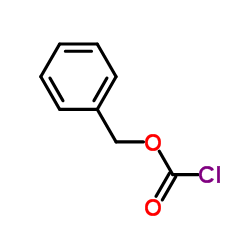 CAS#:501-53-1
CAS#:501-53-1 CAS#:13139-17-8
CAS#:13139-17-8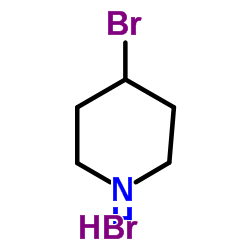 CAS#:54288-70-9
CAS#:54288-70-9 CAS#:95798-23-5
CAS#:95798-23-5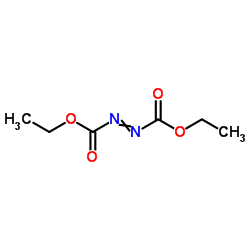 CAS#:1972-28-7
CAS#:1972-28-7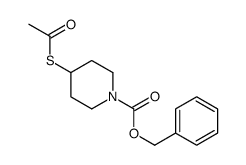 CAS#:146827-60-3
CAS#:146827-60-3 CAS#:66207-23-6
CAS#:66207-23-6 CAS#:3742-91-4
CAS#:3742-91-4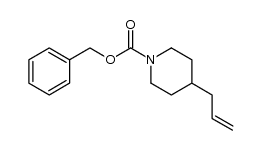 CAS#:1352733-74-4
CAS#:1352733-74-4